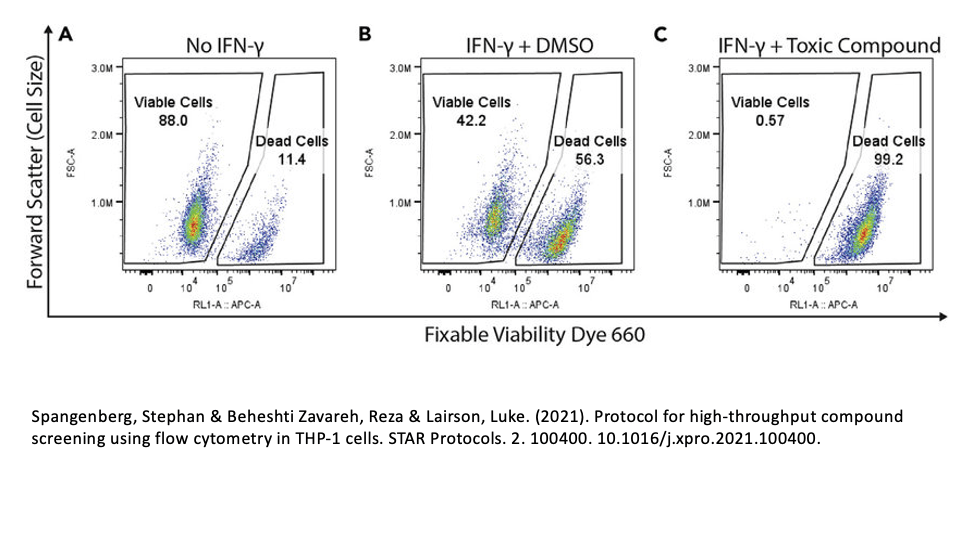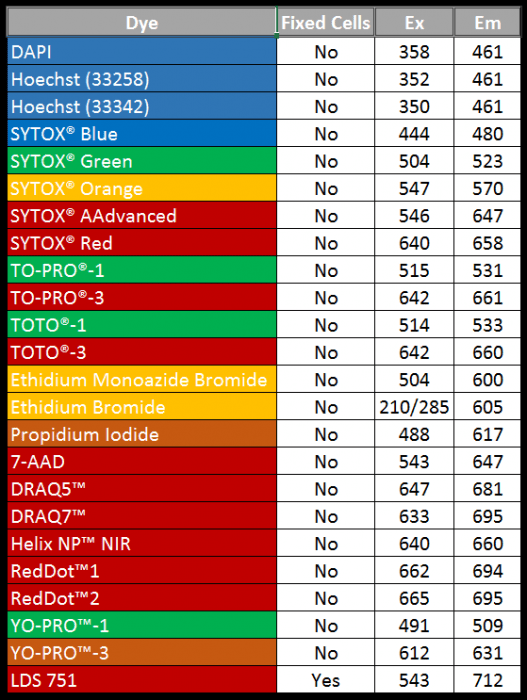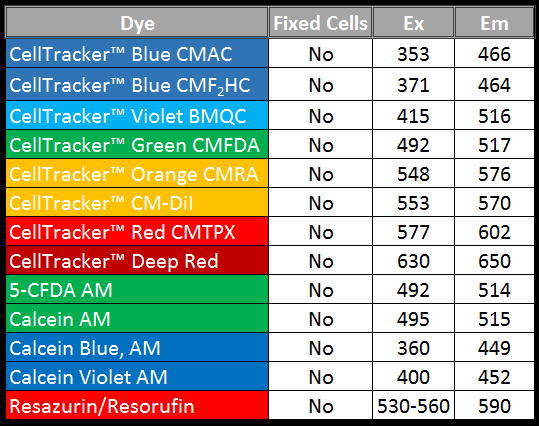Viability dyes are critical controls for proper flow analysis. The presence of dead cells can result in unwanted autofluorescence, cell aggregation, non-specific antibody binding, and a compromised capacity for RNA/DNA to proliferate in downstream applications. These issues become particularly pronounced when detecting antigens with low expression levels or counting rare cell populations.
Therefore, researchers must identify dead cell populations with a viability dye in order to exclude these cells from analysis via gating. In this guide, we discuss the benefits and applications of the various types of viability dyes.
DNA-Binding Dyes
DNA-binding dyes, such a s 7-AAD and propidium iodide (PI), are impermeable to the intact cell membranes of live cells. In contrast, dead cells with compromised membranes allow these dyes to penetrate and bind to nucleic acids to generate a fluorescent signal. While these dyes are relatively inexpensive and easy to use, they typically cannot be used with fixation or intracellular staining.
Cell colors are approximations and observed colors may vary.
*SYTOX®, TO-PRO®, TOTO®, and YO-PRO™ are registered trademarks of Thermo Fisher Scientific. DRAQ® is a registered trademark of Biostatus Limited. Helix NP is a trademark of Biolegend. RedDot™ is a trademark of Biotium.
Amine-Reactive Dyes
Similar to DNA-binding dyes, amine-reactive viability dyes, such as Zombie Violet™ and LIVE/DEAD™ Fixable Far Red, still rely on the principle that dead cells have compromised cell membranes. Instead of binding to DNA, amine-reactive dyes bind to cellular proteins. Since they are also impermeable to intact cell membranes, amine-reactive dyes can only bind to cell-surface proteins on live cells, but these dyes can pass through the membrane of dead cells to bind to the amine groups of their abundant intracellular proteins. Therefore, amine-reactive dyes stain dead cells with discriminately more fluorescence. Amine dyes are typically very stable, so they are often used with fixation and permeabilization protocols. These dyes can also be paired with amine-reactive beads as a compensation control. Additionally, they will react with any free protein contained in your sample.
*Zombie™ is a trademark of Biolegend. eFluor™ and LIVE/DEAD™ are trademarks of ThermoFisher Scientific. Viobility™ is a trademark of Miltenyi Biotec. Horizon™ is a trademark of BD Biosciences. Ghost Dye™ is a trademark of Tonbo Biosciences. Live-or-Dye™ is a trademark of Biotium. VivaFix™ is a trademark of Bio-Rad Laboratories
Enzyme-Activated Dyes
Enzyme-activated dyes, such as Calcein AM and CellTracker™ Deep Red, can be applied to stain living cells without killing them. These dyes are often non-fluorescent or weakly-fluorescent until activated by an enzyme reaction. They freely pass through living cell membranes, where they are converted into membrane-impermeant, fluorescent reaction products. The dyes are retained in living cells through several generations and can be transferred to daughter cells, making them useful for monitoring location, cell movement, and proliferation.
*CellTracker™ is a trademark of Thermo Fisher Scientific.
Incorporating viability dyes to identify and exclude dead cells allows for more precise separation, identification, and analysis of your target cell populations. FluoroFinder’s Panel Builder can help you find viability dyes that are compatible with your experimental context and specific cytometer configuration. Looking to learn more about a specific viability dye? Search our Dye Directory to learn about the spectral properties and applications of your dye and browse products from over 70 suppliers.








